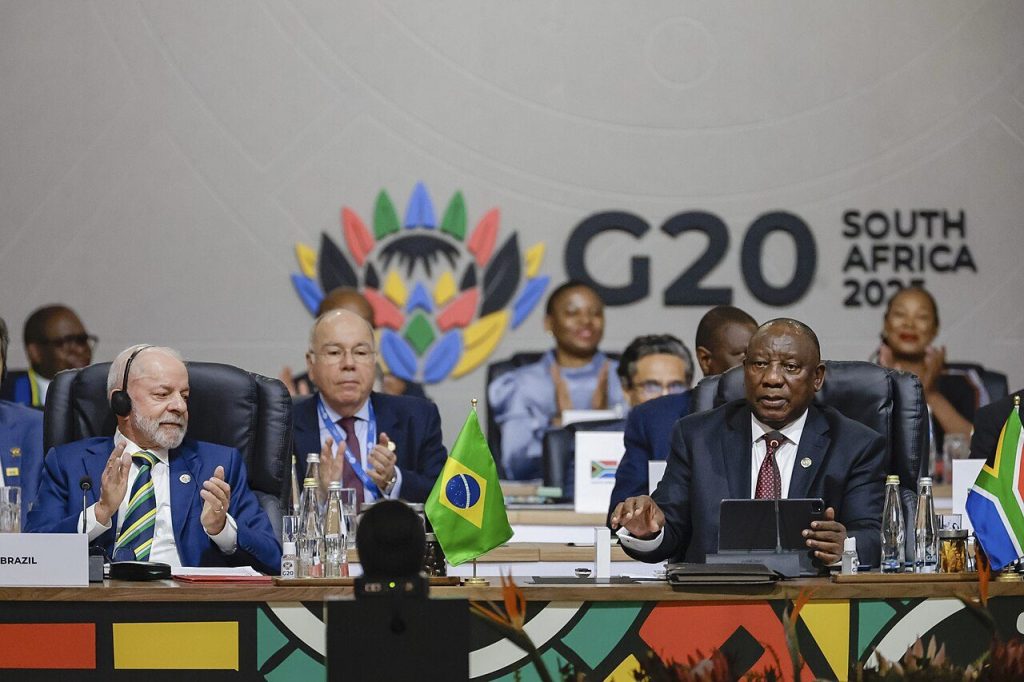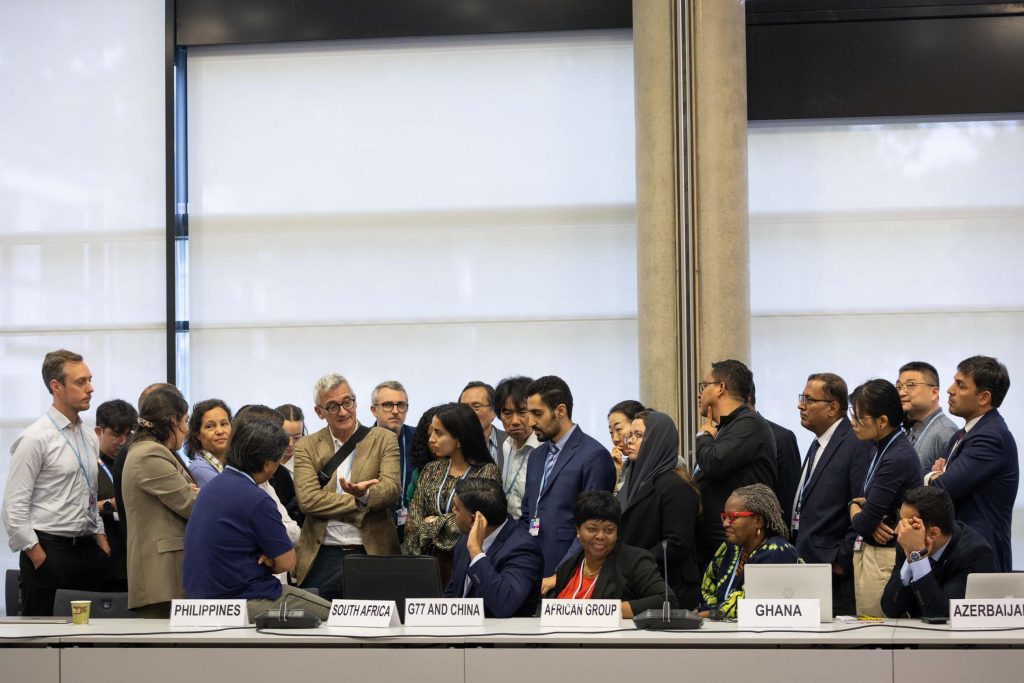Africa’s Debt Dilemma and the Lomé Conference Ambitions
Between 12 and 14 May, the African Union (AU) under the auspices of the United Nations Economic Commission for Africa (UNECA), assembled African Heads of States and African Multilateral Financial Institutions, in what was christened the first ever debt conference in Lome, Togo. This was part of a broader effort to rally African leaders behind a common public debt management agenda towards restoring and safeguarding debt sustainability. The reform of the global financial architecture, as well as measures to secure new and innovative financing, also featured on the agenda.
Following the IMF and World Bank Spring Meetings which prioritised jobs and growth, and a lackluster coverage of climate finance, this meeting sought to formulate a coherent position on financial architecture reforms to unlock sustainable finance in pursuit of economic growth. UNECA Executive Secretary, Claver Gatete, put forward five key pillars for reform with a call to scale up innovative climate and green finance as a key pillar. He emphasised green and blue bonds, debt for climate swaps, and sustainability-linked loans. With other leaders drumming the trope that debt is not necessarily bad and calling for a focus on its use, it appears that the approach will remain business-as-usual.
The draft declaration indicates some progressive milestones such as a push for a legally binding UN Framework Convention on Sovereign Debt. It also calls for an enhanced debt restructuring framework at the G20 through the African Union Commission, and the establishment of an African Credit Rating Agency. On the climate and debt nexus, leaders called for an increased use of Public Private Partnerships (PPPs) and carbon trading, as alternative financing mechanisms to improve the overall fiscal position of countries. Participants also supported the development of an enhanced framework for debt sustainability: one that accommodates debt swaps for climate and nature − where a country agrees with its creditors to allocate the savings from restructuring of existing debt to finance climate and environmental action. This is premised on the assumption that swaps reduce the debt burden of countries.
However, the utility of debt for climate swaps is questionable. At best, the generated savings are insignificant, compared to the financial needs of debtors. Further, they are subject to the dictates of nature and conservation strategies approved by bilateral creditors, which may not always be in the interest of debtor countries. Crucially, they also exacerbate the debt crises.
Questionable Agenda of Debt Financed Climate Action
The argument that debt is not inherently bad, that somehow its utility depends on how it is used in conventional economics, cannot be directly imported into development contexts, such as climate action. Among other things, it ignores structural, economic and systemic risks inherent in debt-financed spending, particularly when it comes to mobilising climate finance. There is ample evidence that without coordinated emission cuts and climate stabilisation, fiscal limits will worsen, especially for countries already saddled with debt. This justifies the call for a framework that addresses both debt sustainability and climate action. In doing so, some have argued that the optimal approach is one that allows a full spectrum of tools to align fiscal and monetary with nationally led systems, i.e. ones where a country self-determines its climate action, not extra-national ideals, where action is dictated by creditors.
Proceeds do not always go where they are intended to − political economy distortions have often led to funds from proceeds being misallocated. Debt and climate action also do not always align in timing. Climate related projects tend to have long gestation periods while debt repayments are short term. This can lead to forced austerity and a risk that a borrowing country cannot finance its debt when it becomes due. Lenders can then exploit the situation by pushing for additional debt inducing finance mechanisms for climate action, only perpetuating the debt cycle and diverting finance further away from climate action.
Other country creditors have been aligning their finance strategies with swaps and used them as a means to strengthen diplomatic ties. However, they have also used them to exert control over freed-up resources through conditions. Private lenders use them to improve their ESG ratings, avoid higher losses in restructuring and profit from fees. Of the US$352 million lifetime savings that El-Salvador made on its US$1 billion debt to nature swap, it had to agree to monetary penalties, interest rate adjustments and mandatory debt redemption for breaches. In Gabon, investigations found that only US$60million was saved from the swap of US$500million. Even then, the transaction structure means that the full benefit of the savings will be available only after the debt is paid in 2038. There is an annual US$4 million set aside for conservation efforts, which comes with several conditionalities and costs that benefit intermediary companies of partner countries. This is why CSOs and other development actors have called for a cessation of the use of natural resources to repay debts.
Political Economy Pitfalls of Misallocation and Creditor Control
It is in response to these challenges that the Debt Relief for Green and Inclusive Recovery argued that creditors needed to grant debt reductions and credit enhancement mechanisms, to enable countries to invest in their own climate action.
Simply put, the current debt architecture is not fit for purpose, and combining it with any other development objective will only generate negative outcomes, in this case, risk of further debt distress. This, the AU debt conference diagnosed aptly in its call for debt relief.
The Vera Songwe-led Independent Expert Group on debt, nature and climate also affirmed this, and made further calls for the IMF and the World Bank to reform their debt sustainability analyses to accommodate nature and climate considerations. More lending is not necessarily the answer. Their emphasis on the G20 roadmap towards bigger, better and more effective MDBs to support climate action perhaps leaves more questions to be answered, at a time when the foremost MDB, the World Bank, is in retreat. If ‘from billion to trillions’ in favour of climate action looks to some as a misplaced priority, then more lending by MDBs on its account will not assuage the risks associated with debt accumulation. This is true even if the debt has low costs associated with it and is over a longer loan period. It will just result in deferring the inevitable – a debt crisis.
Instead, public and private capital from the multilateral system and capital markets must simply adjust. Investing equity in climate adaptation and mitigation will require a reimagination of how these activities are financed. The consensus that adaptation costs have to be borne by governments has been found to be problematic, as governments may only be able to shore up one-third of adaptation costs needed to put a break on debt accumulation as a result of negative impact climate action. For context, investing in smart urban city design systems in Accra to prevent flooding from unpredictable rainfall patterns will not generate the immediate returns to justify the use of traditional debt instruments.
The experience of Gabon (discussed above) shows that they could lead to higher transaction costs, and structuring can be complex in the absence of standardised approaches. For this same reason, IMF staff have observed that climate conditional grants are a far superior form of finance compared to swaps.
It is easy to see that the problem is the need to continue the current extractive nature of debt as an instrument in climate action. Between 1987 and 2023, estimated savings from swaps generated about US$8.4billion. This is dwarfed by the US$7.6trillion in debt service paid by developing countries. For swaps to be effective, they must be accompanied by a significant cancellation or reduction in the overall debt of a country.
Beyond Swaps and Green Debt Traps – the Need for Systemic Reform
This is where the African Union’s push for swaps will likely encounter challenges. The current practices, coupled with a lack of transparency, creates a cycle which undermines existing debt restructuring efforts. Certainly, swaps have value. But their high transaction costs, complex conditions and misaligned incentives (which defer benefits for decades) do not accord with the current and immediate climate finance needs of African countries.
Additionally, debt for nature swaps reinforce the risk of creditor control over a government’s fiscal policies, divert resources from urgent climate priorities, and fail to address the core issue of unsustainable debt burdens. The current debt architecture exacerbates fiscal fragility, as climate projects require long-term investments while debt repayments remain short-term, forcing austerity and a risk that governments are unable to repay when the debt is due.
The extractive nature of debt finance and methods of restructuring, demands systemic reforms, including substantial cancellation to create room for government led climate investments. Without addressing these, debt for nature swaps will remain an inadequate and often counterproductive solution for Africa’s climate finance needs.





